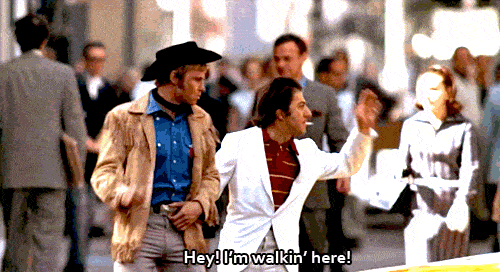Helpful Tips to Keep You On Your Feet
Posted in Senior Health Care Tips
New York is a walking city, just ask Dustin Hoffman.

Because we put more miles on our feet than any other city, SelectCare’s staff of caregivers puts a major emphasis on the health and wellness of our clients from the ground up. To that end, I recently attended a lecture with Neal McDonald, a pedorthist with Eneslow Shoes and Pedorthists, hosted by Empowering Ethical Elders.
McDonald covered a broad range of foot health questions and I decided to boil them all down to some key points, enjoy!
Our Feet As We Age
- As we get older, our feet continue to grow. Notably, our feet typically become longer and flatter as the arches of our feet become less pronounced.
- Our feet also become less sensitive. Shaking out your shoes to remove small rocks and other debris is a great way to prevent minor injuries that could lead to blisters, infections or worse if left unattended.
- Our feet might lose feeling, but we feel each step more as we age. The bottoms of our feet have a thin pad of fat that cushions our bones as we walk. This pad becomes thinner as we put more mileage on our feet, causing our bones to take more of each impact.
- Wearing shoes around the house might lead to more vacuuming or sweeping, but provides much needed padding that can greatly improve the longevity of your feet.
- Older feet are more susceptible to blisters, dry skin, athletes foot and warts. Alternating between two pairs of shoes daily allows your unused shoes to air out and remain more sanitary.
The Right Shoe Makes All The Difference
- When buying shoes, always measure your feet to find your current size. Since one of your feet is probably larger than the other (don’t feel bad, most of our feet are like that), you should always try on both shoes in a pair before buying.
- Older toes are very susceptible to abrasions and cramping if cooped up. Seek out shoes with more space around your toes. Ideally, the area of the shoe above your toes should be made of a stretchy material to give you room to move.
- Our feet swell over the day, so try to make a trip to the shoe store one of your last stops on a shopping trip for the best day-long fit.
- When trying on shoes, don’t forget to stand up! Your toes will stick out an additional 3/8” to 1/2” when you stand.
- If you choose to wear heels, avoid skinny stilettos. Not only are they a nightmare around subway grates, but they maximize the pressure on your feet. Heels don’t need to be clog-chunky, but should have a solid base and extend from your heel to your arch for maximum support.
- Although Velcro shoes are easier to get on, they provide slightly less stability than lace ups, since the laces secure the shoe over a longer length of the foot.
With so much to do and so much to see in New York City, foot pain should never keep you off the sidewalk. To learn more about how SelectCare’s dedicated staff of caregivers and nurse supervisors can help preserve your independence, call us today.
